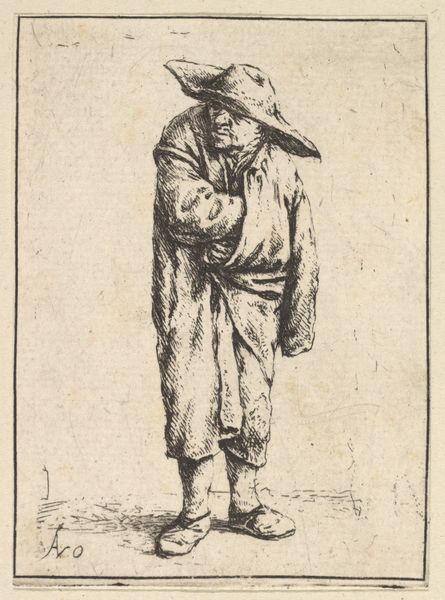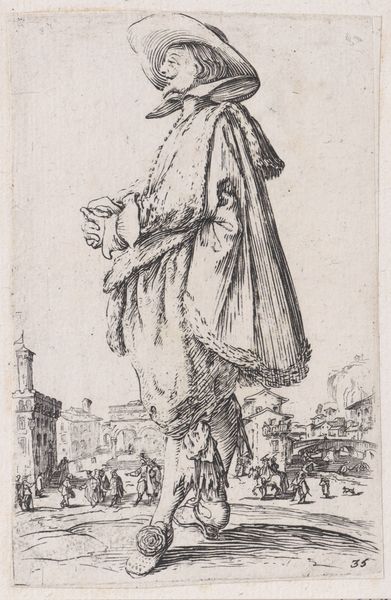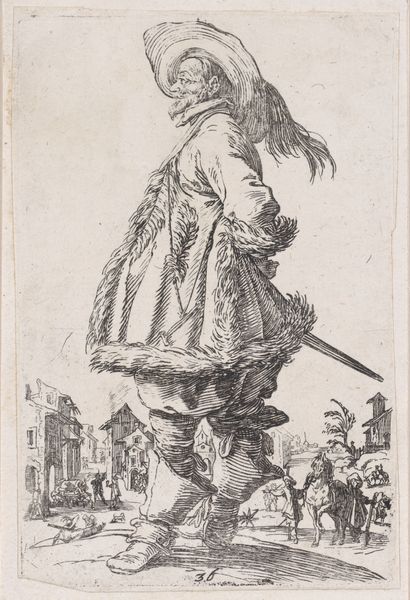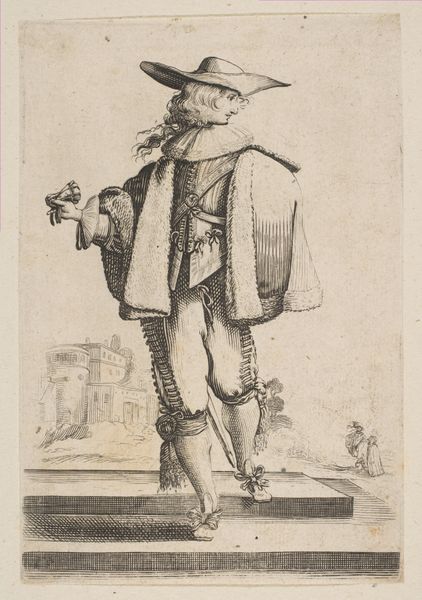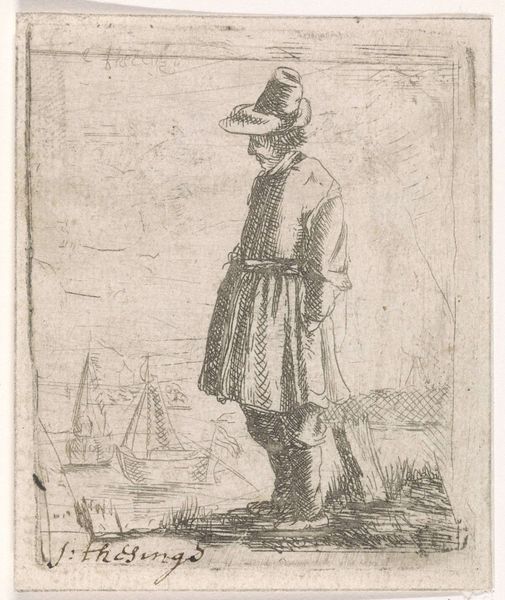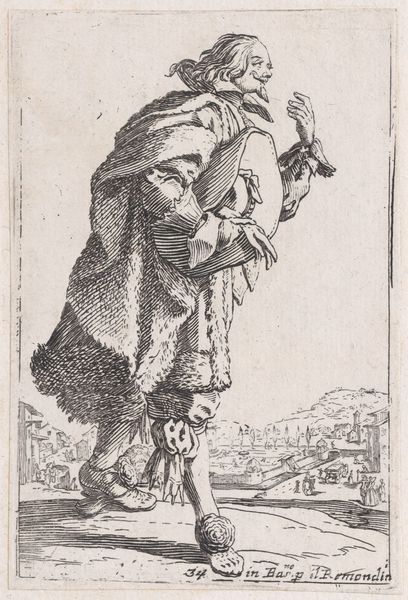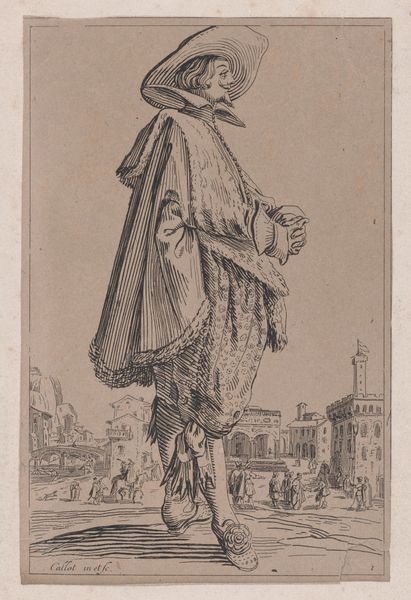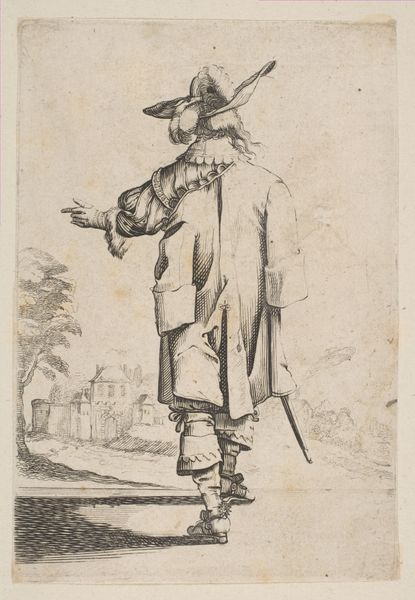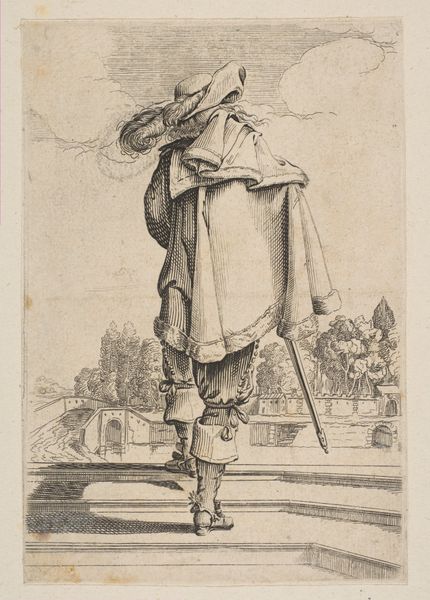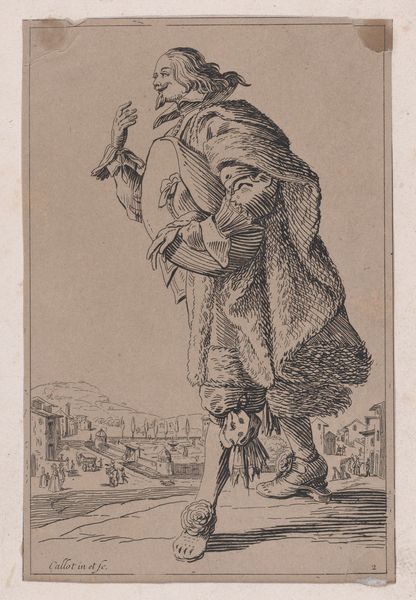
etching
#
portrait
#
baroque
#
dutch-golden-age
#
etching
#
landscape
#
figuration
#
genre-painting
Dimensions: height 106 mm, width 65 mm
Copyright: Rijks Museum: Open Domain
Curator: This etching, titled "Standing Farmer with His Hand in His Mantle", is an artwork dating back to the 17th century by an anonymous artist. It is held in the collection of the Rijksmuseum. Editor: It has a somber mood, doesn’t it? The way the farmer clutches his mantle and turns his head, there’s a feeling of exhaustion and resilience. Curator: It reflects a social landscape of the Dutch Golden Age. While the era brought prosperity, it also carried immense pressures on rural communities, facing issues of labor and economic hardship. The farmer here becomes representative of the marginalized, highlighting the social stratification of the time. Editor: I notice how the artist uses the symbol of clothing to create an expression of this, it drapes to signal tiredness, almost like another character weighing him down in the composition. Curator: Exactly. This piece challenges the common perception of Dutch prosperity. The choice to portray a solitary farmer in simple garb can be seen as an act of protest against the prevalent glorification of wealth, offering instead a reflection on class and the life of labor. Editor: The hat adds an element too – pulled down, shadowed, almost like he is trying to avoid being seen. Symbolically, this adds to his silent protest. It suggests the invisibility of those who work the land. Curator: That's astute. And, from a technical perspective, the etching medium itself emphasizes that vulnerability. The delicacy of the lines and monochromatic palette lend themselves to a portrayal of precariousness. Editor: Indeed. In some ways, the roughness of the etching reflects the harshness of his life. The cityscape, with its tall masts, looming in the distance and adding a contrast between city and rural life and adding to that pressure of industrial development and the changing landscape. Curator: His pose also indicates isolation from any collective structure – leaning slightly away from a cluster of busy-looking workers further back in the scenery. Editor: After our discussion, what strikes me most is that at first glance it might look like just a scene from daily life but when you dig deeper, it becomes something more, something raw and challenging, about who matters in this new golden world. Curator: It prompts us to consider the unacknowledged labor that often underpins progress, challenging the simplistic narratives of history by making clear reference to its complex intersectional realities.
Comments
No comments
Be the first to comment and join the conversation on the ultimate creative platform.
